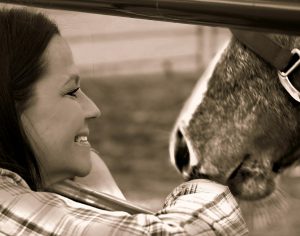A bond between men and horses has existed throughout the centuries, as these animals have proven more than essential for our survival and prosperity. Throughout history, we have used horses in the fields of agriculture, transport, military, sports, and even medicine.
History of EAT

You are probably less familiar with the use of horses in medicine, considering how all of the other mentioned categories are a pretty common sight to see. Here we will go over the so-called Equine-Assisted Therapy (EAT), its history of use, and reasons behind its restorative power.
Even in ancient Greece, people were aware of the horse riding therapeutic potential. It was a treatment for those who suffered from incurable diseases, both physical and mental. It was a great way to deal with low morale, neurological disorder, legs paralysis, and orthopedic dysfunctions in general.
Clearly, modern medicine offers advance solution and treatments for those conditions. Nevertheless, there is a good reason why EAT managed to stick around even today, and why its effectiveness remains undiminished, in spite of modern medicine and technology.
Therapeutic Riding
Horse riding is so much more than taming an animal and learning how to control it. Horses are both larger and stronger than us, and if you take those two facts into account we are basically at their mercy when trying to ride them. However, just like us, they are social creatures, who love to play, who love their freedom, who are curious and they cherish the bonds they create.

So, riding a horse is about creating a bond of trust, building confidence, and learning how a horse reacts to its surroundings, which in terms teaches the rider how to empathize with the horse.
It can really help people with anxiety who are sensitive to their surroundings and feel threatened. EAT helps them by putting them in a situation where they need to focus on the feelings of the horse in order to keep the animal calm, which also means they have to take responsibility and practice remaining calm themselves. More importantly, people with impaired physical mobility are allowed to overcome their limitation and even gain a reliable animal companion along the way, which in itself is truly uplifting.
Why Horses
As mentioned there is a long history of human and horse coexistence and it is why they are suitable for Equine-Assisted Therapy. Of course, there are specific traits that a horse needs to possess in order to qualify for EAT(calm, gentle, and well-trained). But most importantly the horses possess innate traits that are rudimentary for this kind of treatment:

- Unbiased/Unprejudiced – Horses react to patients’ emotion and behavior. They do not judge them based on their look or previous life decisions. This really helps patients to build up their confidence, to do better, and to strive to make positive change.
- Keen Observers – Horses are herd animals who survive by relying on their heightened vigilance and awareness of their surroundings. Due to these innate abilities, they are able to provide immediate and consistent feedback. In other words, they can mirror the patient’s emotions and behavior, which leads to the patient becoming more self-aware.




